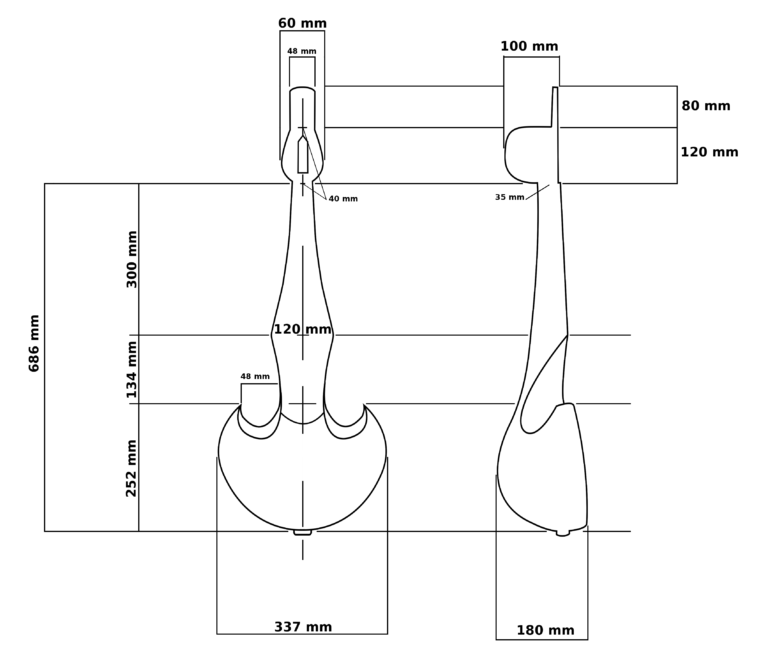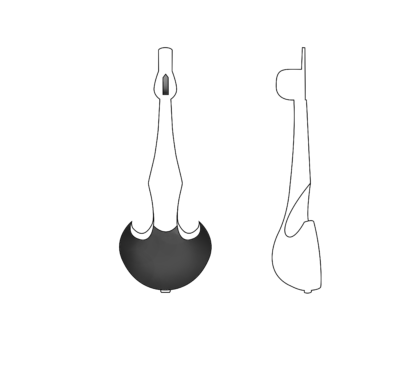
Montage: Detail of the Bichitr miniature
The rubāb of Bichitr, named after the miniaturist who depicted it, appears on a miniature produced in the 17th century (around 1640). This miniature is kept at the Victoria & Albert Museum in London. https://collections.vam.ac.uk/item/O405720/painting-bichitr/
The miniature depicts a rural scene with three figures, including a musician. The instrument played belongs to the rubāb family. There are at least two versions of this miniature. One has four pegs, but only three strings. In another version, the instrument has three pegs for five strings. It is possible that there is a convention behind this ratio of pegs to strings. This is also true of some European viols. It is possible that the same applies to this representation.

Image: Comparative representation of a chikārā and the rubāb of Bichitr
The Bichitr rubāb has a morphology similar to that of viols/lutes chikārā, themselves affiliated with the viols sarindā. These instruments can be found across a wide area, from Afghanistan to northern India, via Kashmir and Baluchistan. By placing a viol chikārā next to Bichitr's rubāb and taking the distance from the saddle to the bottom of the resonator as the common measure, we notice similar proportions. This could suggest a possible filiation. This should be taken into account when designing the non-visible parts of the rubāb: the back of the instrument and the depth of the resonator.

Image: Front and side views of Bichitr's rubāb
Drawing inspiration from the representation of the rubāb made by Bichitr and the body of a chikārā with similar proportions, I produced this plan. The rule of proportionality was applied to work out all the measurements starting from the distance between the saddle and the bridge: 663cm to which was added 5cm corresponding to the dimensions between the bridge and the bottom of the resonator. The length of the vibrating string, determined by the distance between the saddle and the bridge, has been designed here for more ergonomic playing, given the absence of a fret on the neck, so that the notes ‘fall nicely’ under the fingers.

Image: Representation of the cavity of the rubāb of Bichitr
The cavity of the Bichitre rubāb is somewhat similar to the Hulbuk rubāb. It is a complex cavity made up of three chambers. The soundboard covers the upper and lower chamber (see image above). The soundboard, made of goatskin, covers the lower chamber and is attached to the basal part of the fingerboard. This type of assembly corresponds to that of the Afghan rubāb.